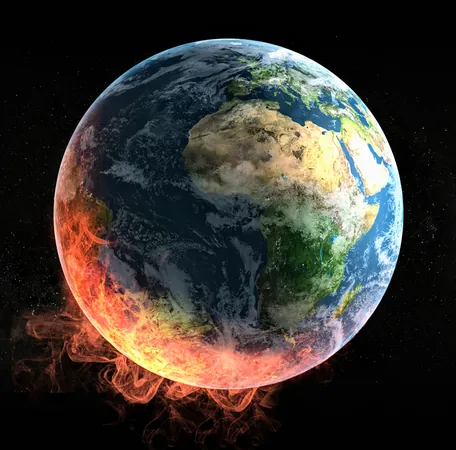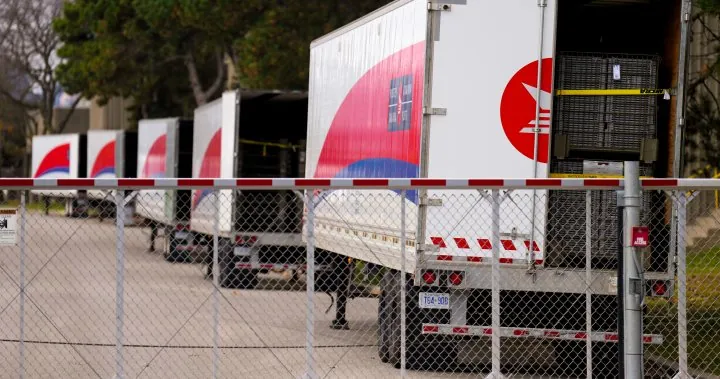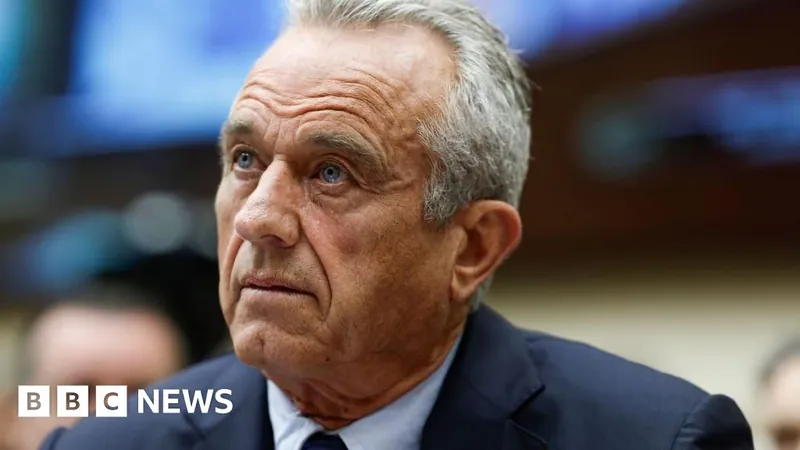
2023's Record Heat: A Wake-Up Call for Earth's Carbon Storage Capacity
2024-11-15
Author: Sophie
2023's Record Heat: A Wake-Up Call for Earth's Carbon Storage Capacity
The relentless heat waves of 2023 have put our planet's health on the line, igniting wildfires and triggering severe droughts worldwide. This calamitous climate scenario has had dire consequences for Earth's ability to absorb atmospheric carbon dioxide, further intensifying the looming climate crisis.
In the past year, extreme temperatures have not only fueled devastating wildfires across regions such as Canada but have also resulted in widespread drought conditions in critical areas like the Amazon rainforest. These events have severely hampered the natural ecosystems that typically act as vital carbon sinks, absorbing a significant portion of human-generated emissions.
Alarming Rise in Carbon Levels
Data from the Mauna Loa Observatory in Hawaii has shown that carbon dioxide concentrations in the atmosphere surged by an astonishing 86% in 2023 compared to levels recorded in 2012. This spike marks the highest concentration of atmospheric carbon since measurements began in 1958. Interestingly, fossil fuel emissions rose only about 0.6%, leading researchers to conclude that the main driver of this escalation is a substantial reduction in nature’s ability to absorb CO2.
The Role of Ecosystems as Carbon Sinks
Normally, Earth’s land ecosystems absorb nearly one-third of carbon from human activities. However, in 2023, their absorption rates plummeted to just one-fifth, the weakest performance in the last two decades. Philippe Ciais, a prominent scientist from France’s Laboratory for Climate and Environmental Sciences, noted that approximately 30% of this decline can be attributed to the extreme heat that sparked massive wildfires and exacerbated drought conditions.
The situation was further worsened by a particularly vigorous El Niño phenomenon, which has historically affected carbon absorption rates in the tropics.
Wildfires and Unprecedented Carbon Emissions
The wildfires raging across Canada, coupled with drought in the Amazon, released an amount of carbon equivalent to the total emissions from all of North America’s fossil fuel consumption. Furthermore, the Amazon rainforest, known as a crucial carbon reservoir, appears to be undergoing long-term degradation, with some areas transitioning from carbon absorbers to net carbon sources.
Earth's Carbon Absorption Threshold
The downward trend in Earth's carbon absorption capability suggests that natural ecosystems may be approaching their limits. This troubling reality indicates that they will struggle to continue mitigating human-induced carbon emissions effectively.
“If we want to maintain safe global warming limits, we will need to adopt even more aggressive emission reduction strategies than previously thought necessary," Ciais warned.
The Importance of Climate Action
These findings amplify the urgent need for global action in combating climate change. Current climate models may underestimate the rapid impacts of extreme weather events on vital carbon reservoirs. As stated by Stephen Plummer, an ESA Earth Observation Applications Scientist, understanding the repercussions of climate change on the carbon cycle is crucial for future strategies.
With the goal of limiting global temperature increases to just 1.5°C—a target set by the Paris Agreement—becoming more elusive, the time for proactive measures is now. We must ask ourselves: How can we adopt more sustainable practices in our daily lives?
The world stands at a critical juncture; without immediate action to reduce emissions and protect our natural carbon sinks, the future health of our planet hangs in the balance.
This study was recently published in the National Science Review, marking a pivotal moment in our understanding of climate dynamics and the urgent need for transformative changes to our environmental policies.









 Brasil (PT)
Brasil (PT)
 Canada (EN)
Canada (EN)
 Chile (ES)
Chile (ES)
 España (ES)
España (ES)
 France (FR)
France (FR)
 Hong Kong (EN)
Hong Kong (EN)
 Italia (IT)
Italia (IT)
 日本 (JA)
日本 (JA)
 Magyarország (HU)
Magyarország (HU)
 Norge (NO)
Norge (NO)
 Polska (PL)
Polska (PL)
 Schweiz (DE)
Schweiz (DE)
 Singapore (EN)
Singapore (EN)
 Sverige (SV)
Sverige (SV)
 Suomi (FI)
Suomi (FI)
 Türkiye (TR)
Türkiye (TR)